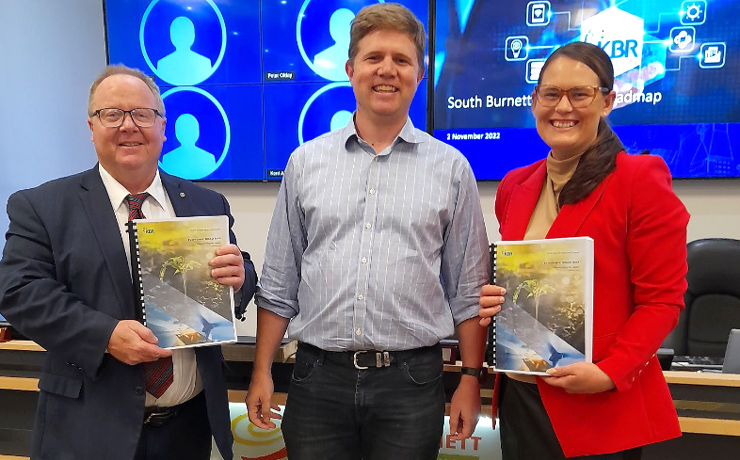
November 3, 2022
South Burnett Regional Council will call on the State Government to fulfil a promise by Premier Annastacia Palaszczuk that all 732 workers employed at the Tarong Power Stations and Meandu Mine will be able to secure equivalent jobs when the power station eventually closes.
The Council will also ask the State Government to invest $300 million into a new Regional Transition Authority, similar to the highly successful Latrobe Valley Authority set up in Gippsland after the closure of the Hazelwood Power Station, to help the South Burnett evolve into a high-value agricultural area.
This Transition Authority would use the investment to foster the development of high-tech, “export facing” agricultural industries that could potentially add $111 million a year to the Queensland economy.
The decision to approach the State Government was made at Wednesday’s Infrastructure Standing Committee meeting, where Councillors received a 25-year Economic Road Map from consultants KBR, the final report from the $2 million, two-year Water Feasibility Project into the region’s future water needs.
KBR said there were four viable water projects in the region that have the potential to open up significant new opportunities for irrigated agriculture.
These were Barlil Weir, West Barambah Weir, Gordonbrook Dam and areas around Blackbutt supplied through the Wivenhoe pipeline.
KBR said that at present, the Tarong Power Stations have an annual 30,000ML allocation from Boondooma Dam and a backup 30,000ML allocation from Wivenhoe Dam.
If the power stations close in 2035 – which has been suggested in the State Government’s recently announced Queensland Energy and Jobs Plan – those allocations would become available for other uses.
KBR said the South Burnett was already a successful agricultural area with the right soils, a favourable climate, growing markets and generations of farming expertise.
However, further growth had been hampered by a lack of water availability.
The State Government’s desire to reduce emissions to net zero by 2050 presented a clear opportunity to transition the South Burnett to a cleaner, greener future.
Modern agriculture was becoming increasingly automated, KBR said, and that was creating more high-tech jobs in the sector that would be very suitable for Tarong and Meandu workers to transition into.
KBR said the Latrobe Valley experience indicated the most successful way to transition a region was to establish a locally led body staffed by acknowledged experts which was independent of both the State Government and Council, but guided by a Board that included State, Council and community representatives.
This new Transition Authority would report back to the State Government and Council on its progress and cease to exist when a full transition occurred.
KBR also warned that the cost of doing nothing would be steep, with the region’s population likely to shrink by more than 10 per cent and future growth flatline or reverse when the power stations closed.
Councillors thanked KBR for their work and voted to seek a meeting between Premier Palaszczuk, South Burnett Mayor Brett Otto and Regional Development chair Cr Kirstie Schumacher as soon as possible to present the Economic Road Map and lobby the State Government to follow its recommendations.
The Council will also arrange community meetings with potential stakeholders soon to update them on the report’s findings and Council’s actions to advance the findings with the State Government.
Related articles:
- Growers Urged To Back Water Project
- Farmers Attend Water Meetings
- Farmers Urged To Speak Up On Water
- $3m Project To Assess Water Options
- Meetings To Discuss Water Projects
- Council Picks Final Water Projects
- Council To Examine Weir Plan
- Council Aims To ‘Empower’ Irrigators
- Barlil Weir Earns Phase 2 Tick
- Parties Urged To Match Weir Promise
- LNP Vows To Build Barlil Weir
- MP Has Hopes For Weir Project
- Water Study Identifies Key Projects
- Water Study Highlights Blackbutt
- Meeting To Distill Water Options
- Meetings To Discuss Water Plans
- Burnett Water Study Begins
- Extra $1.5m For Water Study
- Paradise Dam ‘A Golden Opportunity’
- Department To Lead Water Study
- Water Infrastructure Study Inches Ahead
- Mayor Calls Water Meeting
- Consultant Tipped For Water Project
- Great Ideas … Just Add Water
- Water Meeting On Thursday
- Council To Consult Widely On Water Projects
- $2m Study To Improve Irrigation
- Council Ideas Receive Funding
- QFF Welcomes Water Study























